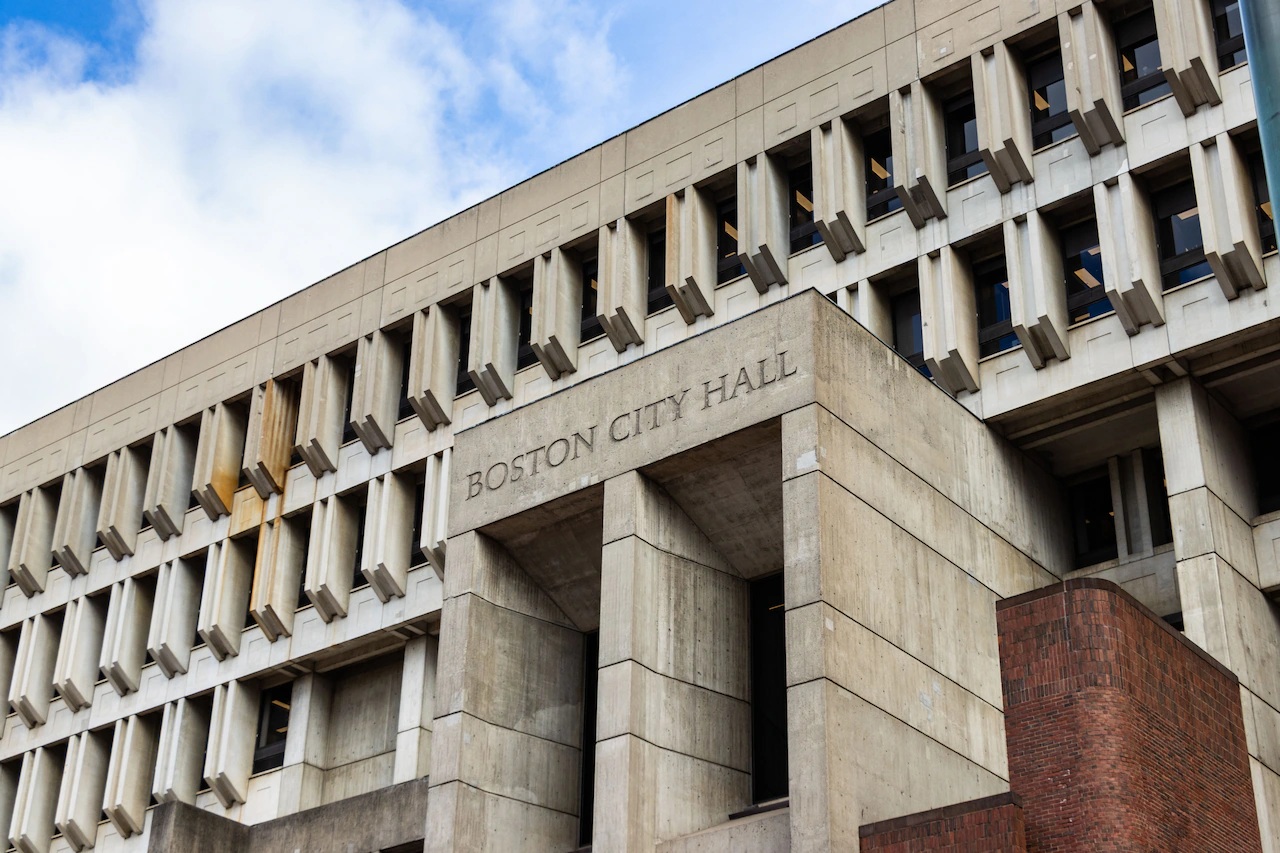Copyright Cable News Network

The longest shutdown in American history appears headed for a conclusion, after eight moderate-leaning members of the Senate Democratic Caucus broke ranks to cut a deal with Republicans on Sunday. Much has yet to play out and votes still need to be held. But it looks as though enough Democrats have given up on demanding an extension of the enhanced Obamacare tax credits and have accepted much more modest concessions. So how did this happen? What did we learn? And where do we go from here? Here are some takeaways from the politics of it. 1. Democrats caved, full stop The Democratic Party isn’t leaving this process with nothing. They got a couple of significant concessions. One is a commitment to hold a Senate vote on extending the enhanced Obamacare subsidies by next month — a vote that could apply real political pressure on Republicans. Democrats also got Republicans to agree to undo President Donald Trump’s attempts to lay off thousands of federal workers and to block any other such efforts through January. But there’s no question Democrats are the ones who folded, and somewhat curiously so. Virtually every poll showed them winning the blame game. They were fighting for something — an extension of the subsides — that those polls showed more than 7 in 10 Americans wanted. About half of Americans wanted Democrats to hold the line — something we just haven’t seen in recent shutdowns. Democrats could seemingly have drawn this out and forced the issue. But they didn’t. “The question was, is, as the shutdown progresses, is a solution on [the Obamacare tax credits] becoming any more likely?” said Sen. Angus King of Maine, an independent who caucuses with Democrats and who voted to advance the deal. “It appears not.” That’s certainly disputable. What’s not disputable is that a handful of more moderate Democrats lost their nerve. 2. Democrats face a new reckoning — at a really bad time Perhaps King and Democrats like Sen. Jeanne Shaheen of New Hampshire who threw in the towel were right. Perhaps Democrats never would have won their main concession, and the shutdown would’ve gotten much uglier for the country in the days and weeks ahead — and unnecessarily so. Perhaps worsening travel delays and Americans going hungry amid the legal fight over foot stamps would ultimately have cost Democrats. We’ll likely never know. But what’s clear is that this cave came at a bad time for Democrats. It was finally looking like the party had some unity, purpose and wind at their backs after a year of being riven and lost in the wilderness. Some polling suggested Democratic voters, whose dim views of their party rendered it more unpopular than it’s been in decades, were warming to their party’s brand again. The election results last week, following millions of people turning out to protest Trump at “No Kings” demonstrations last month, were especially encouraging for the party. But now Democrats will endure recriminations over whether the party truly has the stomach to fight Trumpism. The lawmakers who’ve advanced this deal appear to be in for some real vitriol from the base, and it’s likely to renew efforts to cast aside Senate Minority Leader Chuck Schumer of New York. Democrats in some ways seem to be in a similar position to where the GOP was last decade, when a large portion of the party wanted to fight harder, but the more moderate and institutional ranks ultimately stood in the way of a bolder approach. None of which means this will sink Democrats in the 2026 midterm elections. History suggests this shutdown will be a distant memory by then. Anybody who cares that much about the shutdown is probably a nailed-on Democratic voter anyway. And this issue could eventually redound to their benefit (for reasons we’ll get to). But it does complicate things internally right now. 3. Trump’s hostage-taking worked One of the more frustrating aspects for the Democratic base will be how this ended. It wasn’t just that Democrats decided to give in; it’s that they did so in a way that appeared to reward Trump for heavy-handed tactics — again. The Trump administration has in recent days ratcheted up the pressure points. It has fought in court to avoid paying full SNAP benefits. And it has reduced traffic at dozens of major airports, leading to hundreds of canceled flights. (The administration said this move was about safety, but critics wagered it was more about leverage.) Trump has also pushed the GOP to scrap the filibuster in ways that didn’t seem likely to go anywhere but might have concerned more institutionally minded Democrats. All of this comes after Trump explicitly targeted what he called “Democrat programs” with layoffs and funding cuts. This is a familiar tale by now. Trump has proved plenty willing to reach for all available leverage at his disposal, often violating political norms and possibly even the law in the process. And it’s worked for him. Institutions including colleges, law firms and media companies have repeatedly folded rather than fight Trump on these things, even when it appeared they had the upper hand. And that surely emboldens him. “Standing up to Donald Trump didn’t work,” King said Monday morning on MSNBC, “it actually gave him more power.” Expect plenty of Democrats to pull their hair out over that quote. 4. Trump’s hubris was on full display The flip side of Trump’s approach, though, was that it betrayed some remarkable hubris. Just consider all that happened over the last six weeks — and how little care he took to mind the optics. The administration repeatedly fought to avoid paying full SNAP benefits. That provided lawmaking leverage, yes, but it also risked making it look like it wanted to use poor people and their hunger as leverage. The president attended a “Great Gatsby”-themed party at his Mar-a-Lago resort the night before Americans were due to start losing those SNAP benefits. Trump bulldozed the East Wing of the White House to build a $350 million ballroom that polls show the American people are pretty skeptical of. He extensively promoted a very marbled renovation of the Lincoln Bedroom bathroom. And Trump’s efforts to gild the White House seemed to continue apace. These are all pretty questionable moves, given not just the shutdown but also a series of troubling economic signs. But Trump, who’s taken to talking about “affordability” of late, seems unperturbed by how it might look. Meanwhile, his approval rating has plumbed new depths over the past two weeks. 5. Republicans still have an Obamacare problem — and this could exacerbate it The best case for Democrats’ strategy is this: They were never going to get Trump and GOP leaders to commit to extending the Obamacare tax credits as part of a shutdown deal. But they could force an issue that’s a significant GOP liability, cast a spotlight on it and even force Republicans to take some tough votes and squirm a little. Regardless of whether that was actually the best Democrats could do, the pressure being applied on the GOP on health care isn’t insignificant. With around three-quarters of Americans supporting the tax credits, this issue poses very real political problems for Republicans. A recent Pew Research Center poll also showed health care was the GOP’s worst issue among a dozen tested, with 42% favoring the Democratic Party’s approach, compared with just 29% for Republicans’. Look at none other than Rep. Marjorie Taylor Greene of Georgia pleading with her party to renew these tax credits. Or the July memo authored by Trump’s own pollster, Tony Fabrizio, making the case that letting the subsidies lapse could spell political disaster for the GOP in the midterms. If nothing else, this record-long shutdown could spotlight the choice Republicans are about to make. By voting for a deal that does not extend the subsidies and therefore allows premiums to skyrocket for millions of Americans, Republicans will have made it clearer that this is what they fought hard for. They’ll be put on the record on the issue in an even starker way when the Senate takes a separate vote on the subsidies. If that measure were somehow to pass, it could pressure Speaker Mike Johnson to allow a vote in the House too. (Johnson did not take questions at a news conference Monday morning, but he has previously declined to promise such a vote, as Senate Majority Leader John Thune has pledged.) While Democrats want these tax credits extended from a policy standpoint, you could argue that the best thing for them from a raw-politics standpoint is for Republicans to reject them — and for voters to remember it come 2026. Republicans are already having to deal with explaining the major Medicaid cuts in Trump’s big agenda bill over the summer. And unlike those cuts, which are delayed until after the 2026 midterms, these premium increases will go into effect quickly. At the very least, Democrats have continued to fertilize a potent political argument on bad issue for the GOP. 6. Maybe shutdowns can actually work? Former Senate GOP leader Mitch McConnell often says shutdowns simply don’t work. He said in 2023 that they “never have produced a policy change and they’ve always been a loser for Republicans, politically.” This shutdown should challenge that conventional wisdom. No, Democrats didn’t get all or even most of what they wanted. But their ability to largely win the blame game suggests future shutdowns could be successfully leveraged, if the party forcing them plays its cards right. The big problem with the GOP’s shutdown strategies last decade seemed to be that the things they were shutting the government down over — defunding Obamacare and building a border wall — just weren’t that popular. Democrats showed that if you push for something that enough people favor, you might have a shot.



